From Queen Elizabeth to Yusof Ishak: The banknotes that tell the story of Singapore
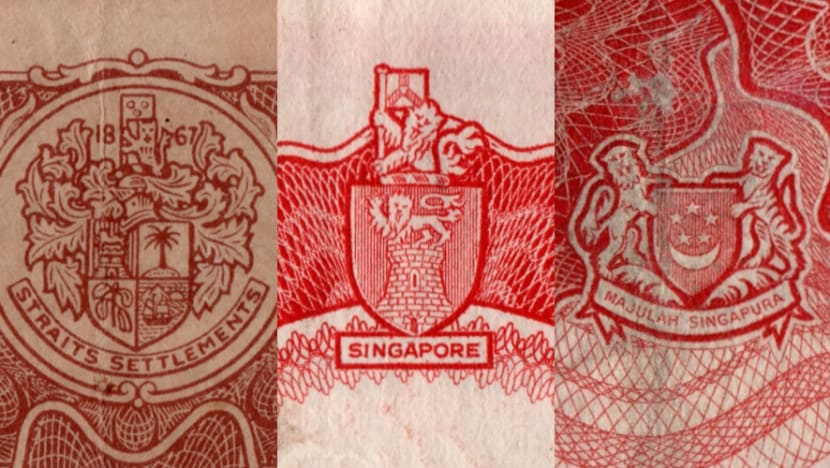
The coat of arms of the Straits Settlements, the coat of arms of colonial-era Singapore and the Singapore State Crest depicted on Malayan dollar and Malaya and British Borneo dollar banknotes. (Images: CNA/Kurt Ganapathy)
SINGAPORE: One of the more everyday realities that people in Britain will face following the death of Queen Elizabeth II is that the country's banknotes will change.
Instead of the face of Britain's longest-reigning monarch, who died at the age of 96 on Sep 8, people will use money adorned with an image of King Charles III.
Most countries' banknotes reflect their history, and Singapore is no exception.
From British colony through to independence and beyond, Singapore's banknotes tell the story of a country making significant changes in its political landscape, its urban landscape and its priorities.

CHANGING OF THE GUARD
For most of the colonial era in Singapore, the island was governed as part of the Straits Settlements, a crown colony that also included Malacca (now known as Melaka) and Penang, and later Labuan, an island off the coast of Borneo.
In the early 20th century, the currency used in the colony was the Straits dollar.
Singapore was mentioned on this dollar's notes, with one from 1924 declaring: "The government of the Straits Settlements promises to pay the bearer on demand one dollar at Singapore local currency for value received".

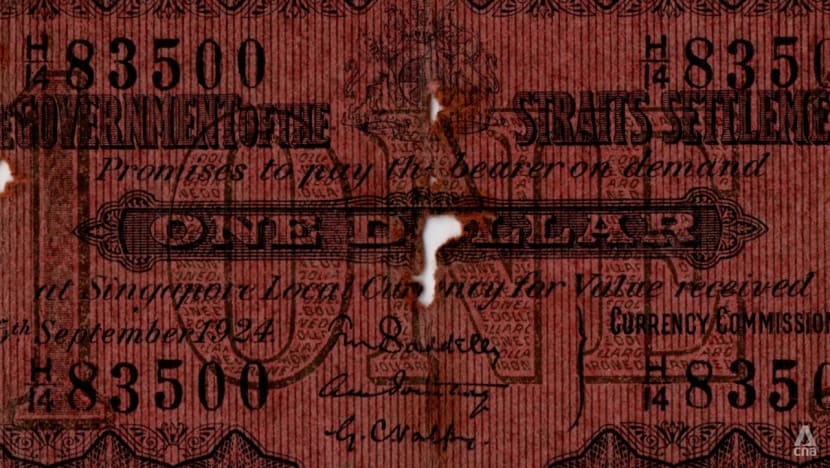
Even at this early stage, something at the heart of Singapore's national identity was apparent.
On a few Straits dollar notes that are now more than a century old, values were expressed in four languages: Malay (in Jawi script), English, Chinese and Tamil.
Another aspect of the currency would survive well into the post-independence era.
The highest denominations of the Straits dollar – $1,000 as seen at a 1999 auction in Melbourne, and $10,000 as seen in specimen form at a 2017 London auction – would also be closely associated with modern-day Singapore.
Singapore's S$10,000 and S$1,000 banknotes are among the most valuable circulating banknotes in the world today in terms of face value, although the issuance of the former ended in 2014, and the latter in 2021.
In the 1930s, the Straits dollar depicted the monarch of the day, George V. But the king's reign was nearing its end.

In 1936, following the death of the king and the infamous abdication of his heir Edward VIII, George VI inherited the throne.
By 1940, the Straits dollar's reach had expanded to include the Malay states, and the currency got a new name – the Malayan dollar.
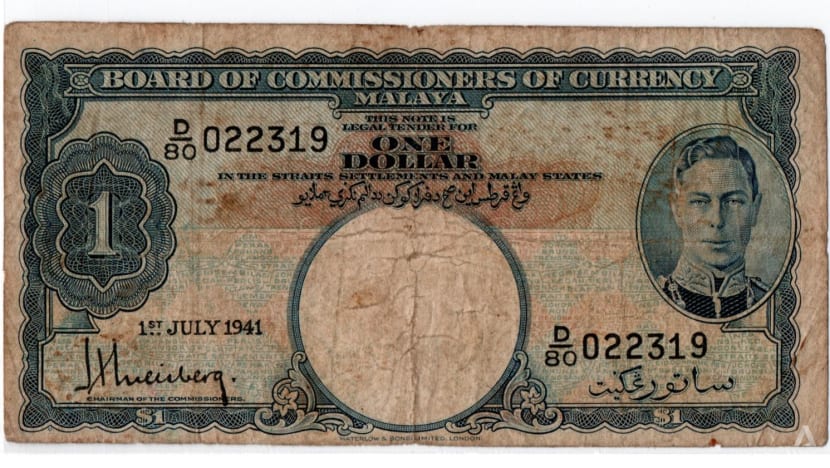

George VI now appeared on the notes, as did the crests of the entities where the new dollar was legal tender.
Within the coat of arms of the Straits Settlements, Singapore was represented by a lion atop a castle tower.
By this time, a colour scheme was established for the banknotes of the colony that anyone familiar with today's Singapore dollar would immediately recognise – green for the $5, red for the $10 and a distinctive greyish blue for the $50.
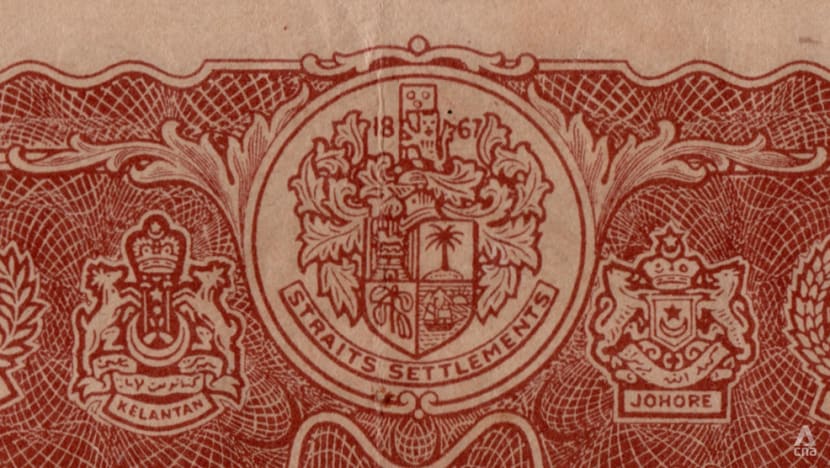
THE ROAD TO INDEPENDENCE
The Malayan dollar survived World War II, when it was briefly replaced by the Japanese invasion currency popularly and derisively referred to as "banana notes".
But great changes were afoot once the war was over.
In 1946, the Straits Settlements colony was broken up, with Malacca and Penang joining the newly formed Malayan Union – later to be called the Federation of Malaya in 1948. Labuan, meanwhile, was incorporated into British North Borneo – modern-day Sabah.
And as for Singapore, it became a separate crown colony.
In 1952, George VI died, and he was succeeded by his older daughter, Princess Elizabeth Alexandra Mary.
Just over a month before the accession of Queen Elizabeth II to the throne in 1952, a currency board came into being that would issue another new currency for the array of British territories in the region: The Malaya and British Borneo dollar.

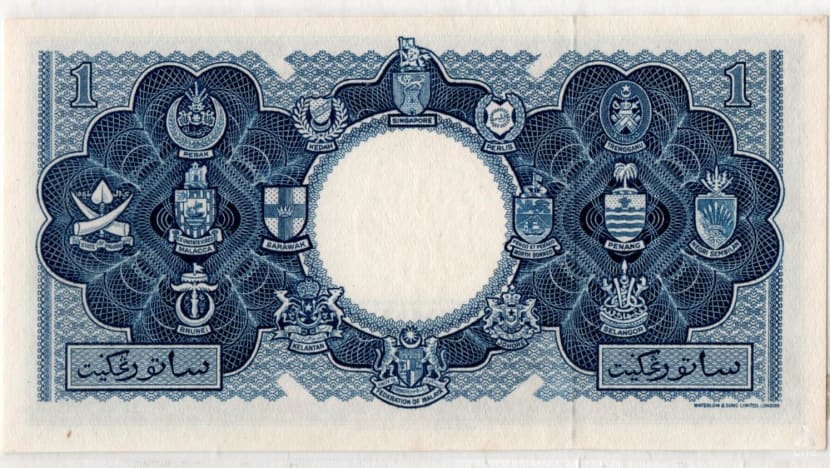
The first notes of this currency carry the date Mar 21, 1953, on them, but according to the Monetary Authority of Singapore (MAS), they did not reach the country's shores until 1954.
The notes came in seven denominations – $1, $5, $10, $50, $100, $1,000 and $10,000 – and depicted the newly crowned queen.
On the back of the notes were the crests of the individual Malayan states, the Federation of Malaya, Brunei, North Borneo, Sarawak and – taking a prominent place at top and centre – Singapore.
In the first decade of her reign, the queen played a ceremonial role in the lives of Singaporeans, although she was not involved in day-to-day governance, said Dr Donna Brunero, deputy head of the Department of History at the National University of Singapore’s Faculty of Arts and Social Sciences.
"For the vast majority of people in Singapore in the 1950s and 1960s, the connection to the queen was not direct or personal, but her image and aspects of her public life – reporting on the queen’s activities and speeches was a regular practice – were widely circulated," Dr Brunero told CNA.
"She personified Britain and the Crown. People's everyday lives were shaped by British colonial policies relating to education, legal systems, language and even currency."

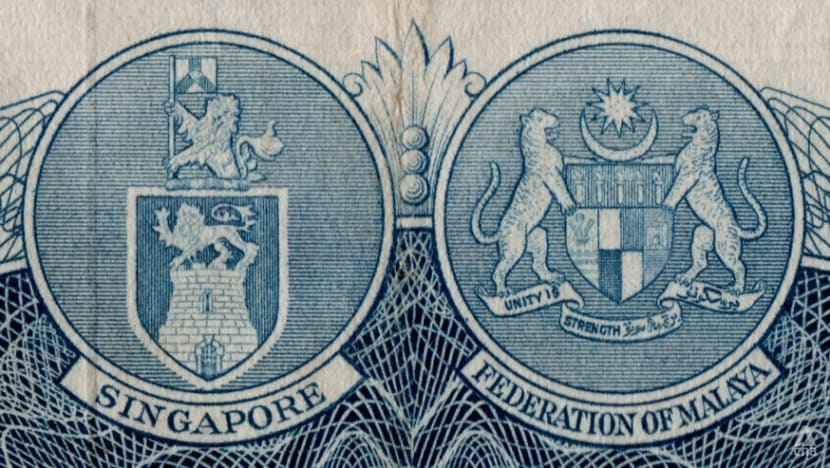
Just one year into the life of these first notes of Elizabeth II's reign, in 1955, Singapore would be granted partial internal self-government.
"For political activists – nationalists – the early 1950s were the backdrop to finding a local voice and forming political parties and working towards Singapore's independence from British rule," said Dr Brunero, who noted that the People's Action Party (PAP) was formed during this period.
Legislative assembly elections that year saw David Marshall take the helm as Singapore's first chief minister, and in the south of the island, a 31-year-old lawyer named Lee Kuan Yew won the seat of Tanjong Pagar in a three-cornered fight.
Queen Elizabeth II sent a congratulatory message to Singapore as the assembly – a forerunner to Parliament – met for the first time.
"In this message, she spoke of her satisfaction at Singapore's constitutional progress and of the responsibilities the Council of Ministers now held for the advancement and prosperity of Singapore and its citizens," said Dr Brunero.
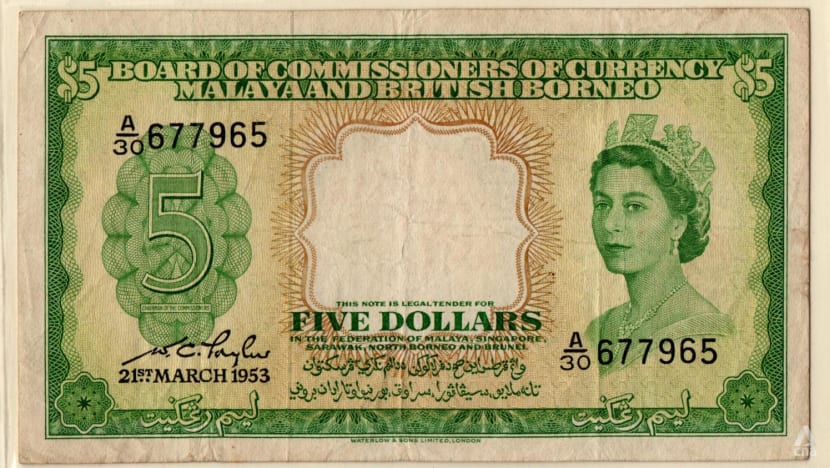
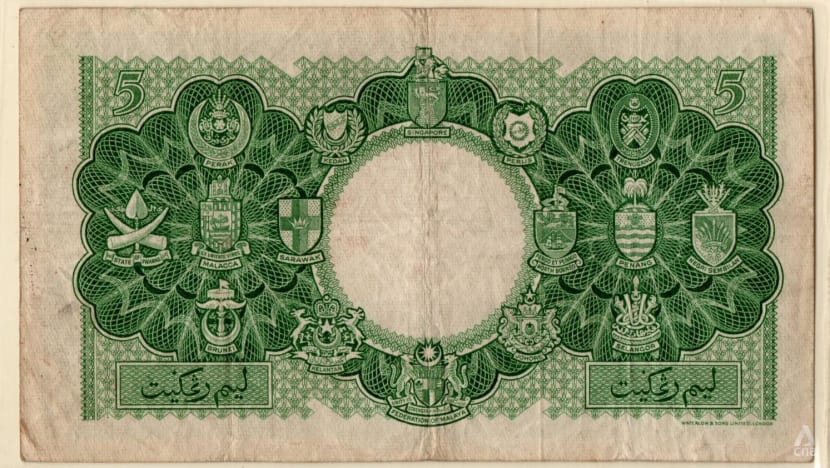
In 1957, the Federation of Malaya gained its independence, and in 1958, the UK parliament passed the State of Singapore Act following negotiations in London.
The Act granted Singapore full self-governance with effect from the 1959 general election. In that election on May 30, 1959, the PAP led by Mr Lee swept to power, taking 43 out of 51 seats.
Mr Lee was sworn in as Singapore's first prime minister on Jun 5.
"The relationship between Singapore and Britain changed dramatically in the 1950s and 60s as Singapore moved towards becoming a self-governing state," said Dr Brunero.
"As Singapore became an independent country, connections to Britain definitely changed – Singapore no longer looked to Britain for decisions on internal or external policy; it was self-governing.
"But a connection remained, particularly in terms of a British presence via military bases, trade links and aspects of popular culture."
This changing relationship would be made evident in the final banknotes of the Malaya and British Borneo dollar.
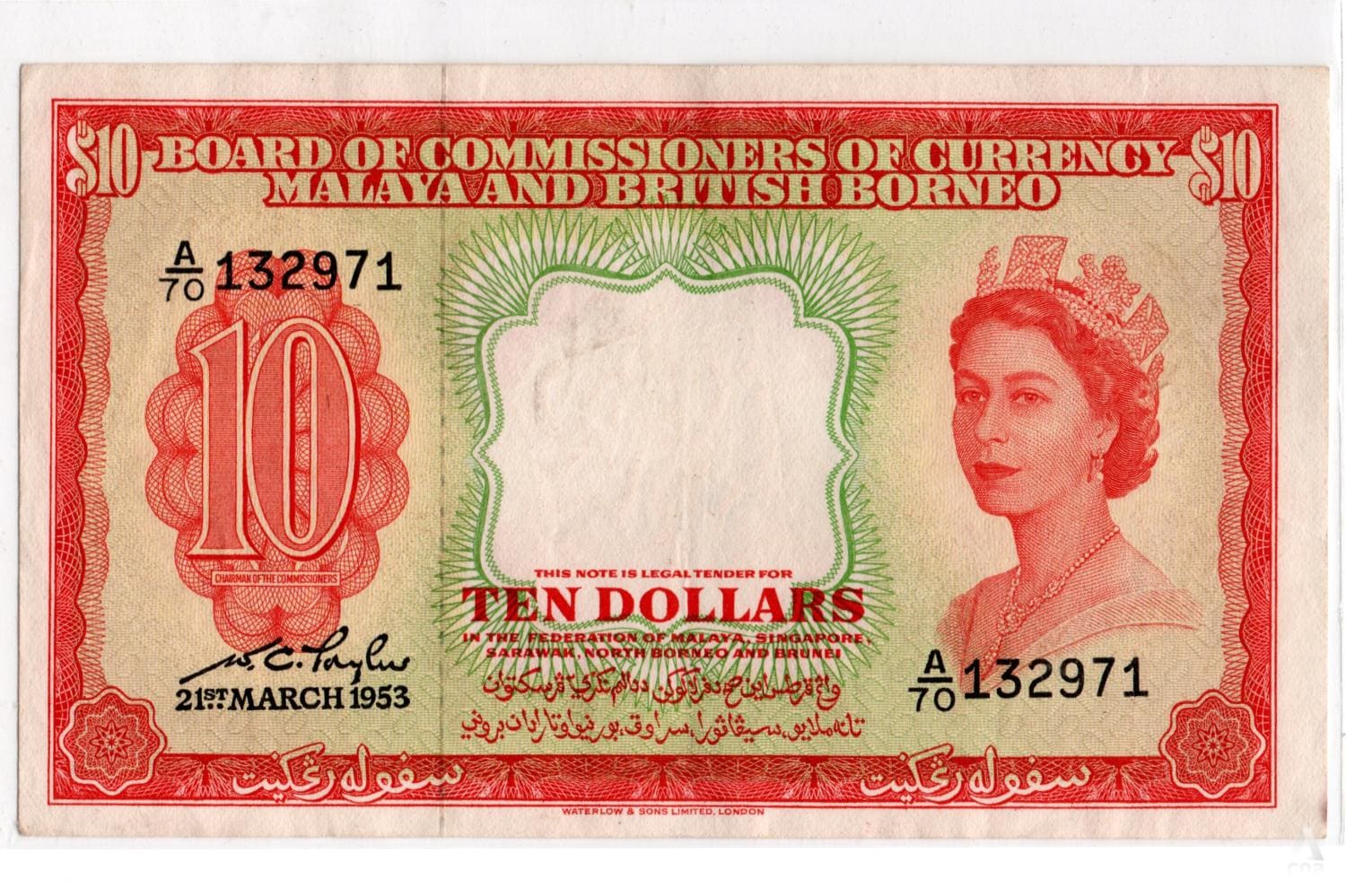
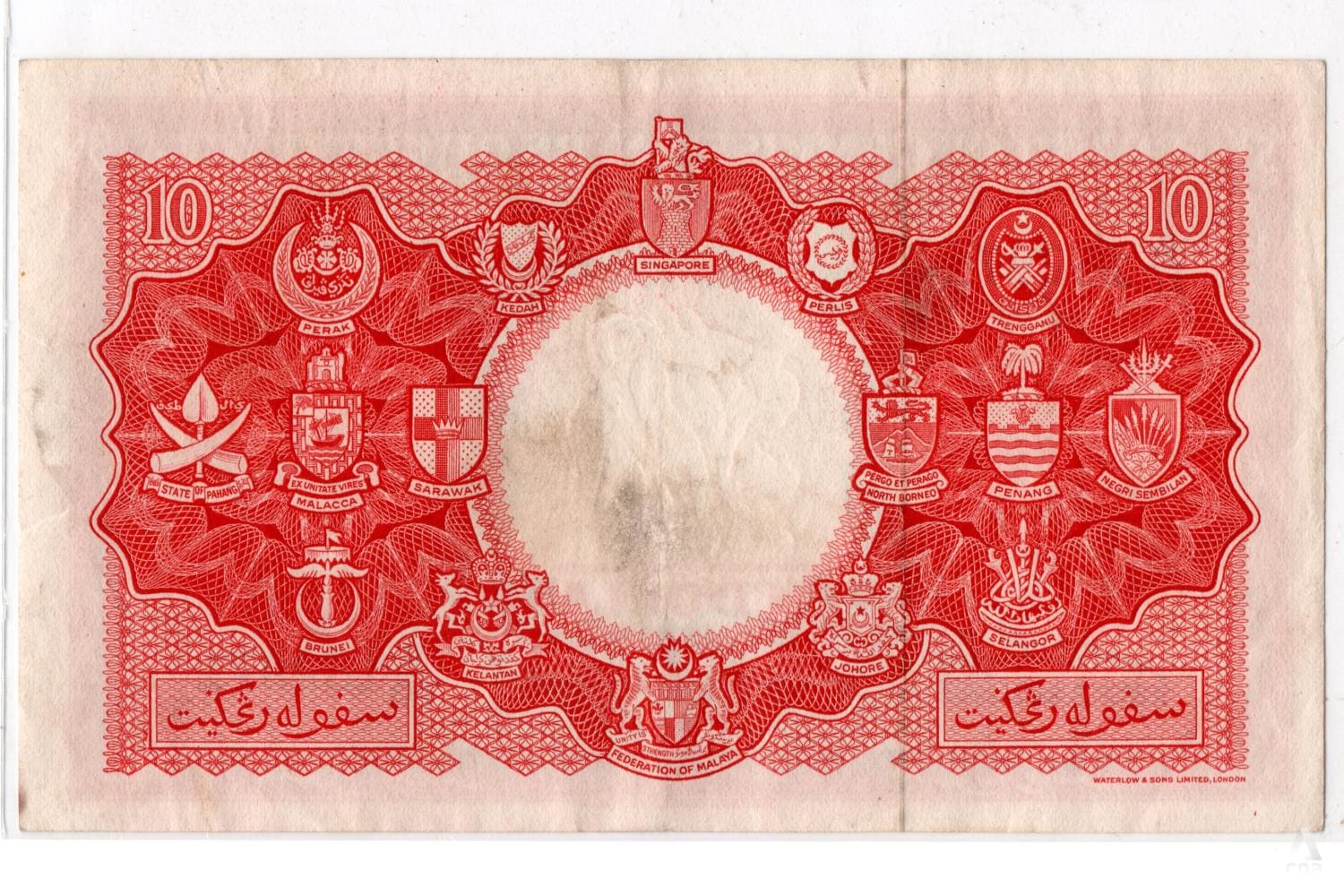
A COLLECTOR IS BORN
It was at around this time that Mr Soon Seng Kai began collecting paper money, his daughter Ms Lynn Soon told CNA.
"My dad started his collection with the Malaya pieces – both George VI and QEII portraits – because these were common currency then when he started collecting in his early 30s," the banknote collector and dealer said.
For him, notes depicting the young queen had and have a particular appeal.
"Personally, for my father, he finds the pieces with the young and pretty queen portraits 'nice to look at'," said Ms Soon. "It is just simple aesthetic appeal."
"Before QEII, the portraits on the Straits Settlements and Malaya notes and coins (were all of) middle-aged males; not that nice to look (at)," she added in a light-hearted reflection, noting that it was not common to find a female monarch's face on banknotes at that time.
Mr Soon's interest in banknotes would last a lifetime and cross into a new generation. Today, at the age of 88, the man known to friends as Ah Soon still runs a shop selling coins and banknotes at Chinatown Complex on Smith Street.
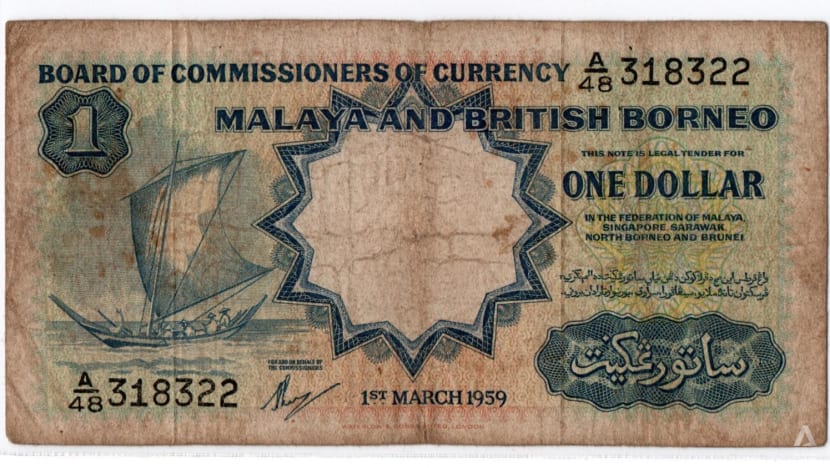
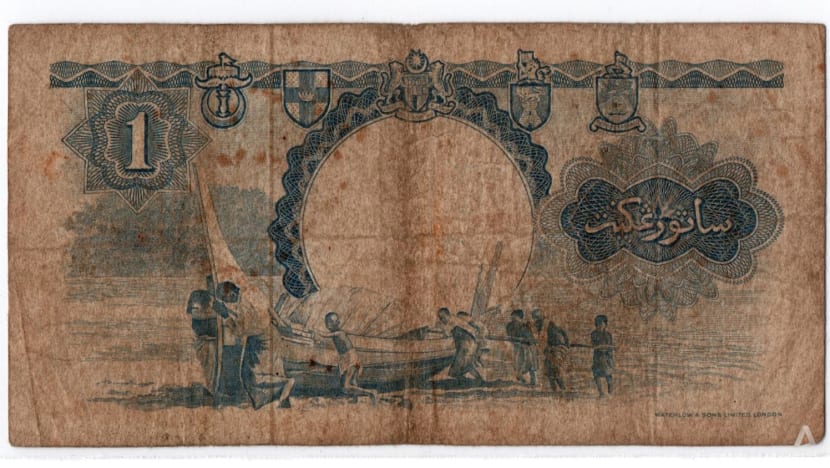
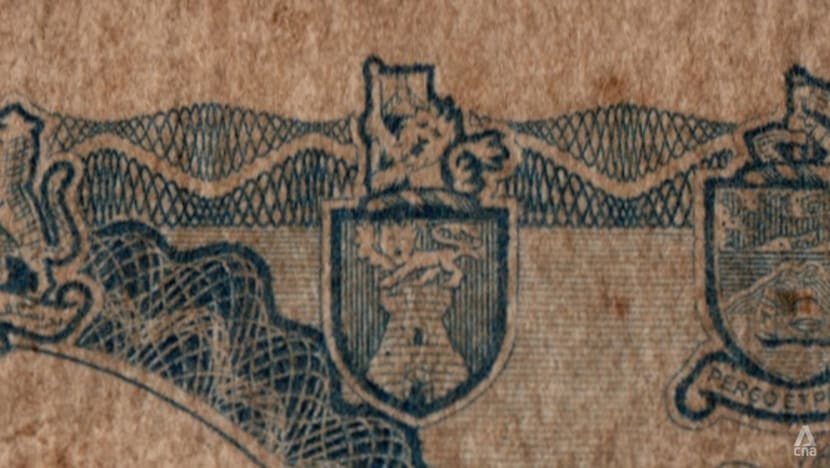
FIVE STARS AND A CRESCENT MOON
The long day of British rule, in the words of English author Anthony Burgess (of A Clockwork Orange fame), was waning.
In 1959, the queen disappeared from the Malaya and British Borneo dollar's new $1 banknotes, replaced by what MAS describes as "elements of Malayan life".
Mr Keh Wee Kwang, the owner of Emporium Antiquities, describes the elements on the two notes of this final series as "a sailing boat design" and "an ox with (a) farmer ploughing".
With full self-governance, Singapore introduced a new coat of arms designed by a committee led by then Deputy Prime Minister Toh Chin Chye.
It had five stars and a crescent moon on a red shield supported by a lion and a tiger. And beneath them, a banner bearing the words "Majulah Singapura".
In 1961, a new $10 note was introduced for the Malaya and British Borneo dollar.
It would be the last new banknote issued before Singapore's independence, Ms Soon and Mr Keh confirmed, and it was also the first to feature Singapore's now-familiar State Crest.


While Singapore gained independence as part of Malaysia alongside Sabah and Sarawak in 1963, the Malaya and British Borneo dollar continued to be used in the new country. Its use also continued in Brunei, which would remain a British protectorate until 1984.
But this common ground, like Singapore's merger with Malaysia, would not last.
In 1967, Malaysia, Singapore and Brunei went their separate ways on the currency front and began issuing their own notes.
Mr Soon remembers the final $10 notes being a symbol of this changeover.
"My father remembered people – likely towkays – trying to sell bundles of the $10 notes or wanting to return the pieces to the bank when it ceased to be legal tender," Ms Soon said.
Two years on from Singapore's independence from Malaysia, the Malaya and British Borneo dollar faded into history, replaced by the Singapore dollar.
And where one would have once expected to see the queen's portrait, orchids bloomed.
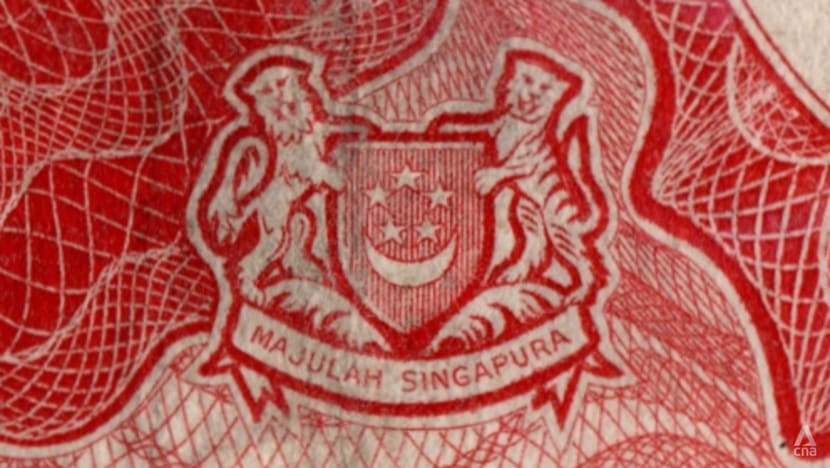
CHARTING A NEW COURSE
The Orchid Series, the first banknote series of the new Singapore dollar, was printed from 1967 to 1976, and it reflected the realities of a new nation finding its feet on its own.
The reverse sides of these notes mainly depicted waterfront scenes and government buildings, but two notes instead represented everyday life in this stage of nation-building.
The first, the S$1 note, had an image of buildings – blocks of flats in a housing estate.
The second, the S$10 note, had more abstract imagery: Four hands of people of different races clasped together over a map of the country. This motif would be revisited 50 years later in the logo of the 2017 National Day Parade.
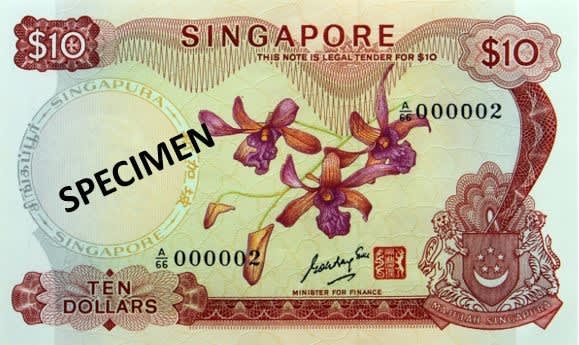
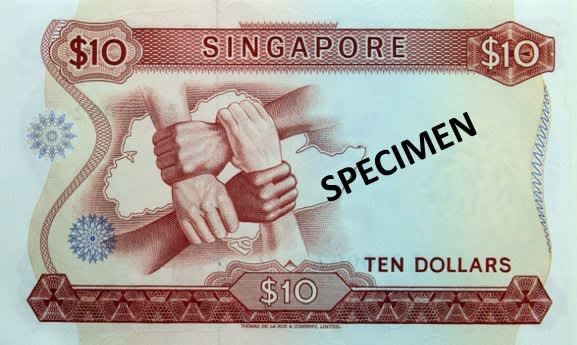
The Bird Series succeeded the Orchid Series in 1976, and would last for eight years.
These notes showed a country that was gaining confidence as it celebrated its identity, recognised its achievements and looked forward to the promise of the future.
A scene from a National Day Parade, dancers from different ethnic groups, the Singapore Cable Car, modern public housing, a shipping terminal and an oil refinery all appeared.
So did Changi Airport as the backdrop to a supersonic Concorde aircraft bearing the livery of Singapore Airlines.
When this image on the back of the S$20 note first appeared in August of 1979, the airport was still about two years away from welcoming travellers.


The Ship Series made its debut in 1984, and featured many of the same elements as its predecessor.
Technology and engineering were celebrated in these notes, through the Sentosa Satellite Earth Station on the S$1 note and the Benjamin Sheares Bridge on the S$50 note.
Members of the Singapore Armed Forces and the Singapore Civil Defence Force also received recognition on the S$500 note.
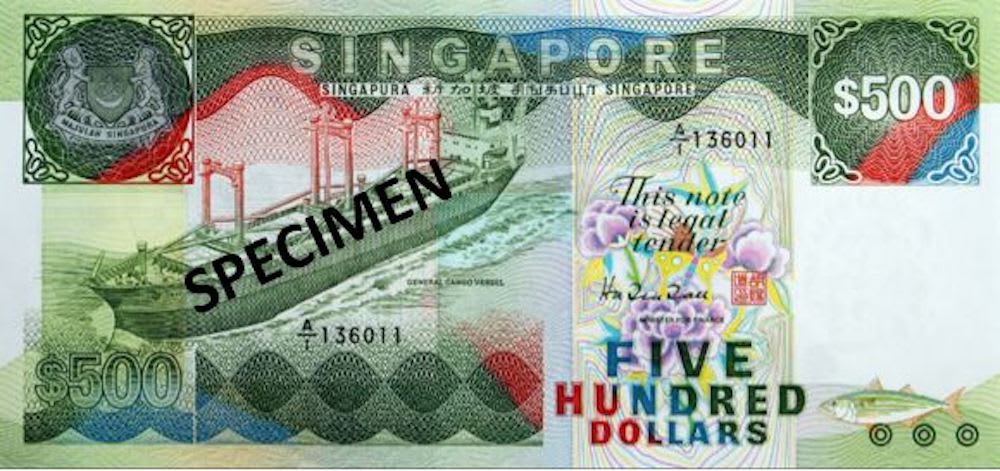
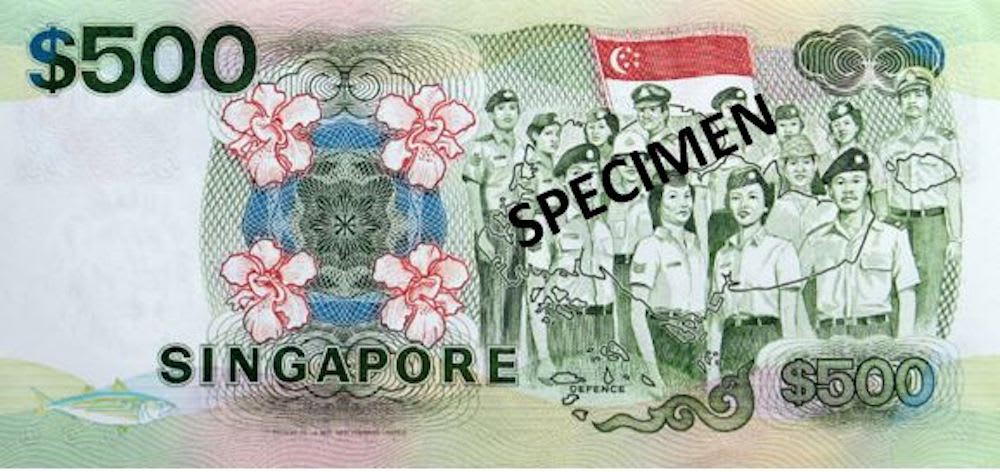
Singapore's current banknote series, the Portrait Series, arrived in 1999 at the dawn of a new millennium.
The banknotes of this series – the first Singapore dollar banknotes to feature a portrait as their main design theme – each depict the country's first president, Yusof Ishak.
Their reverse sides represent broad themes: "Education", "Garden City", "Sports", "Arts", "Youth", "Government" and "Economics".
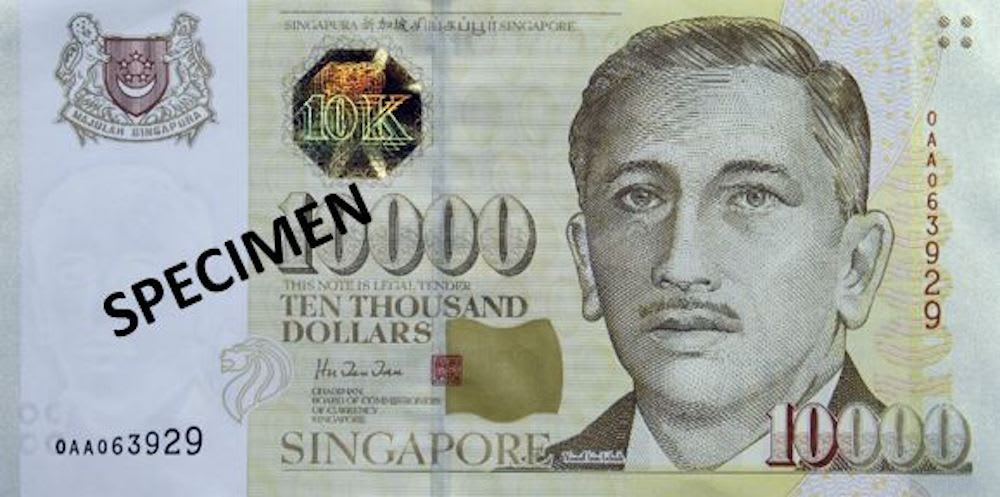
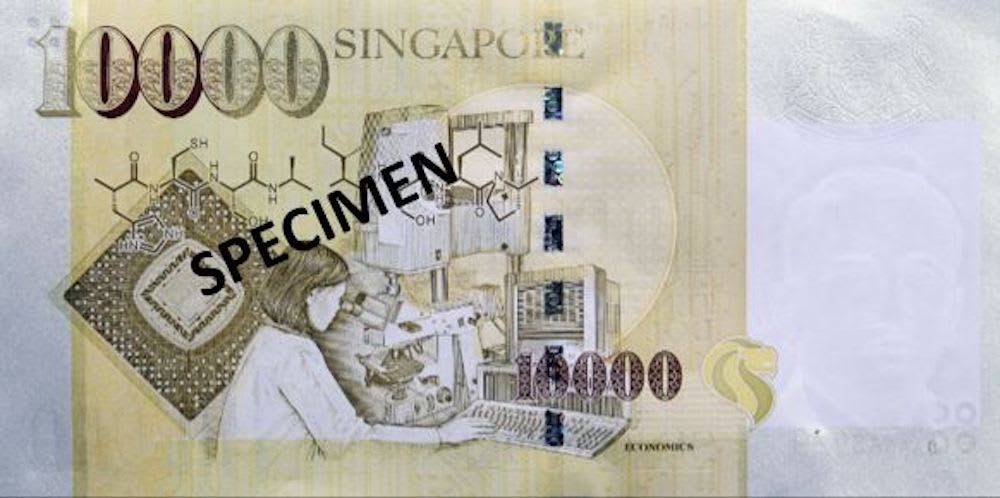
LIFE AFTER THE QUEEN
In the years since her removal from Singapore's money, Queen Elizabeth II remained popular with collectors of coins and banknotes.
Singapore's story of independence in the decades after World War II was not unique. Over the years, the queen made similar debuts and departures on the banknotes of dozens of countries and territories around the world – from Hong Kong and Mauritius to Rhodesia and Ceylon.
To own banknotes portraying her therefore often means owning tangible pieces of history.
"The British Commonwealth has sizeable political and economic influence, and her portraits are on 33 countries' currencies, so it is a good and challenging – but manageable – goal to collect and complete a QE banknote collection. It is an achievement one can be proud of," Ms Soon said, noting that about a third of world banknote collectors focus on Commonwealth pieces.
At the time of her death, the queen was still on the currency in places like Australia, Belize, Canada, New Zealand, a number of Caribbean states and, of course, the United Kingdom and its territories.
Banknote collecting is a hobby that has enjoyed a renaissance over the last two years while travel was difficult or impossible because of the COVID-19 pandemic, Ms Soon shared.
Because of Singapore's historical links with Britain and the Commonwealth, this meant that particular interest was directed towards Queen Elizabeth II banknotes.
The view of old banknotes as an investment class also spurred on collectors who acknowledged that the queen would not be around forever, Ms Soon noted.
"(In the) last two years, some started collecting QEII notes as she was in advanced age and would pass away soon," she said.
"They buy on the presumption (that) … the notes will not lose value and may appreciate in value."
Mr Keh noted that prices of the notes had been on the rise.
"Amongst the more experienced banknote collectors, Queen Elizabeth II banknotes have been popular and the prices have steadily increased over the years," he said.
"I will (say) the prices have been surely going up, at the rate of 5 per cent to 10 per cent year-over-year."
Ms Soon noticed this as well.
"(Prices of) the Malaya and North Borneo pieces went up a lot (in the) last two years – presumably due to interest from these newly minted 'COVID period' collectors – but prices have softened since early this year," she said.
"Nevertheless, it is more likely that uncirculated and/or desirable pieces will keep their prices well even if one had bought at height of a price boom, as long as the QEII banknote collecting appetite is there."
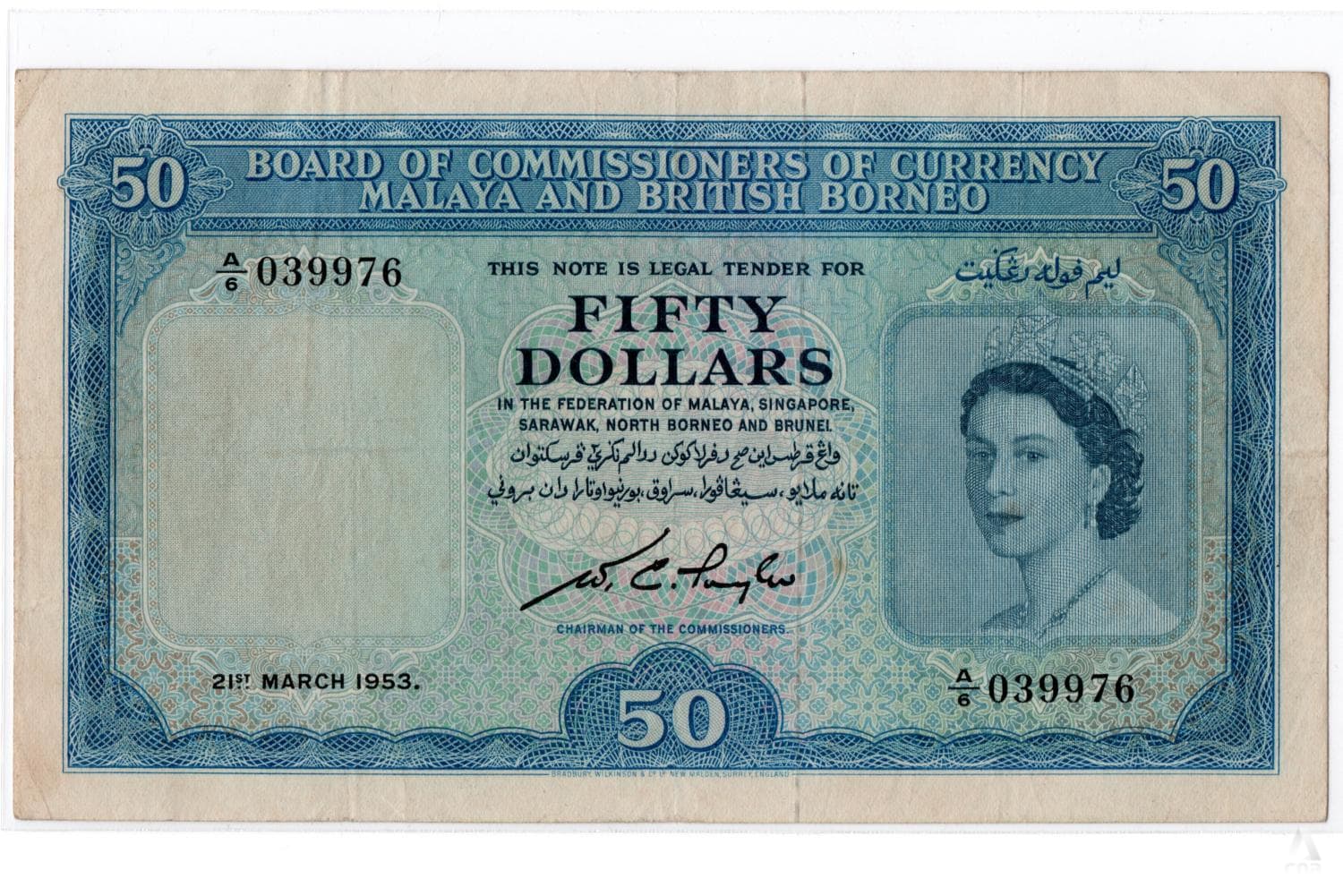

A CONTINUED PRESENCE
But will the interest in collecting these notes live on as she begins to be replaced by King Charles III and figures with more local significance in the Commonwealth realms where she was head of state?
"Personally, I believe that her passing has an influence on the collector's desire for such notes," said Mr Keh.
"Of course, if we look solely at Singapore, it was a British colony and there is also a factor of familiarity (with) British colonial roots.
"The younger queen's portrait will be especially popular."
Mr Keh believes that any spike in interest will eventually dissipate, however, with appreciation falling back to the general level associated with old banknotes.
Ms Soon thinks that the demand for Queen Elizabeth II notes will be there for at least a decade, as existing collectors try to complete their collections and investor-collectors add more pieces to their portfolios.
Non-collectors may also purchase a few notes as souvenirs to remember the queen – and end up becoming collectors in the process.
Ms Soon pointed out that there are still many who collect notes from the reign of another well-liked monarch, King Bhumibol Adulyadej of Thailand, six years on from his death.
Whether or not the interest endures, the queen will continue to have a presence in Singapore in at least one way.
"The connection to Queen Elizabeth – and the British Empire – can also be seen in the landscape, for instance, the naming of Queen Elizabeth Walk – in 1953 – and, later, the naming of Queenstown, Singapore's first satellite town," said Dr Brunero.
"And places and roads in Queenstown are named after towns and cities in Scotland where the queen spent much of her childhood: Strathmore Avenue and Dundee Road are just some of the places named with a connection to Queen Elizabeth II."














